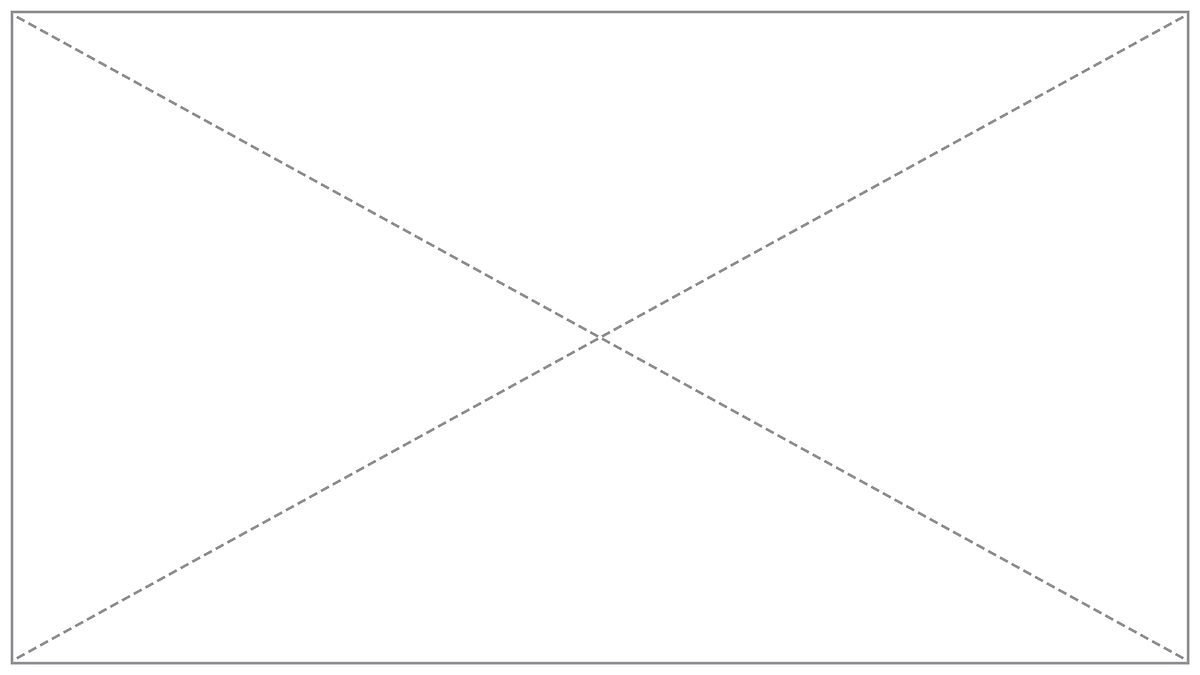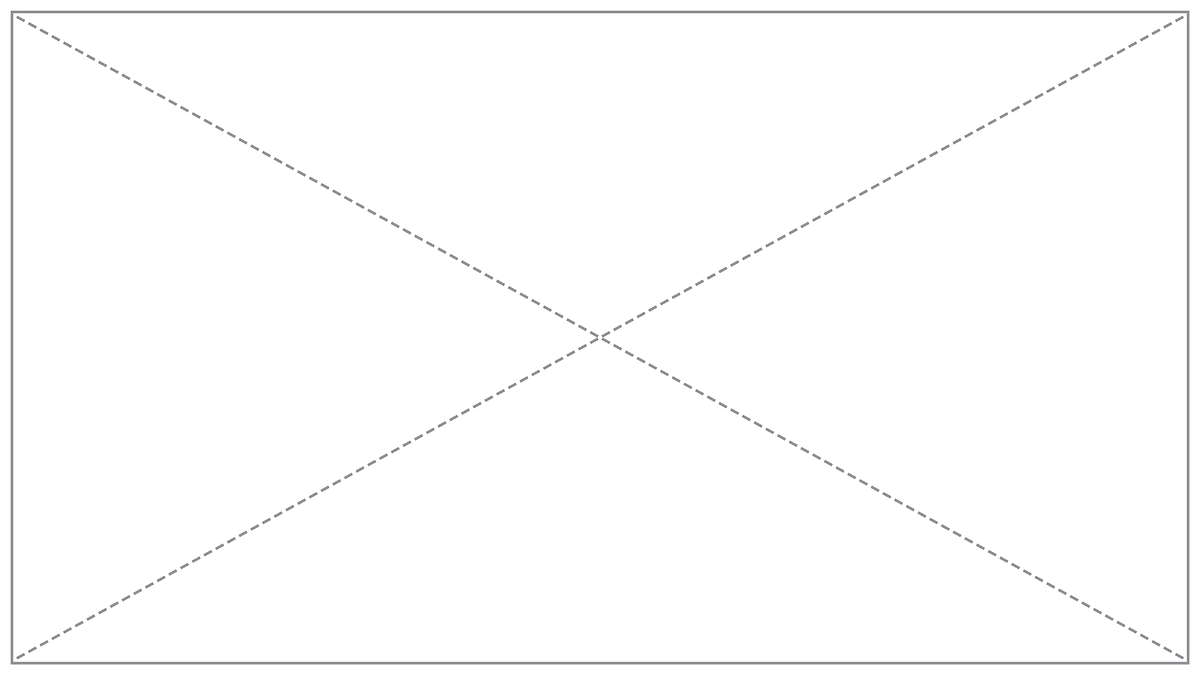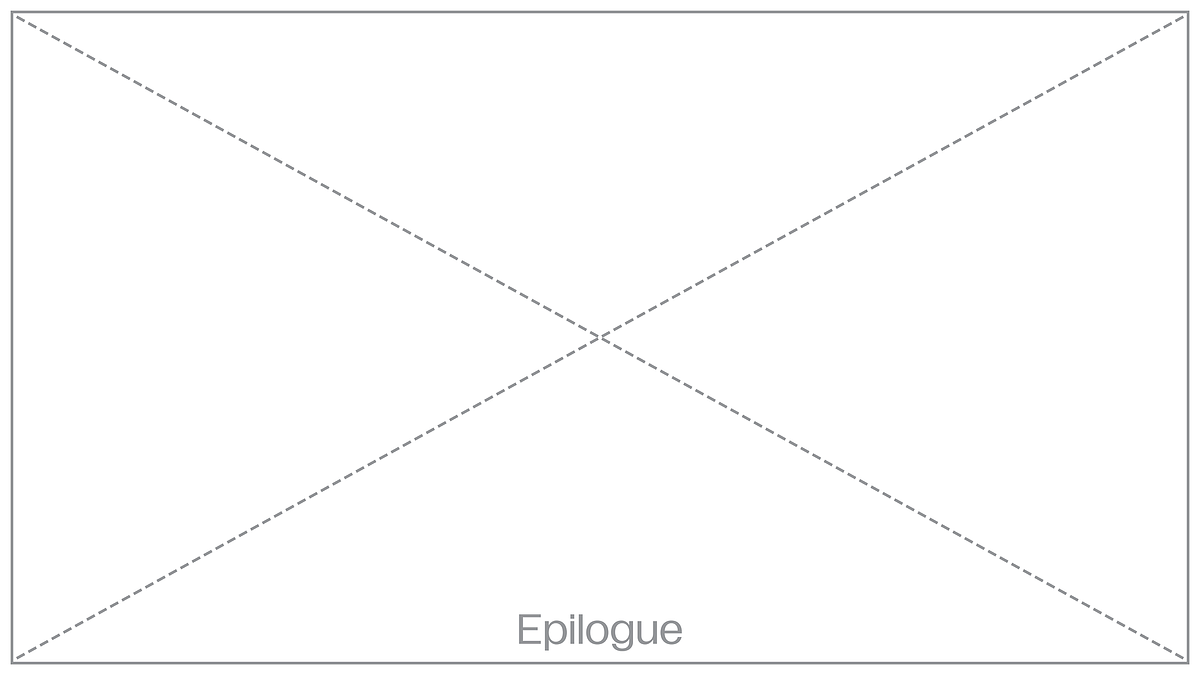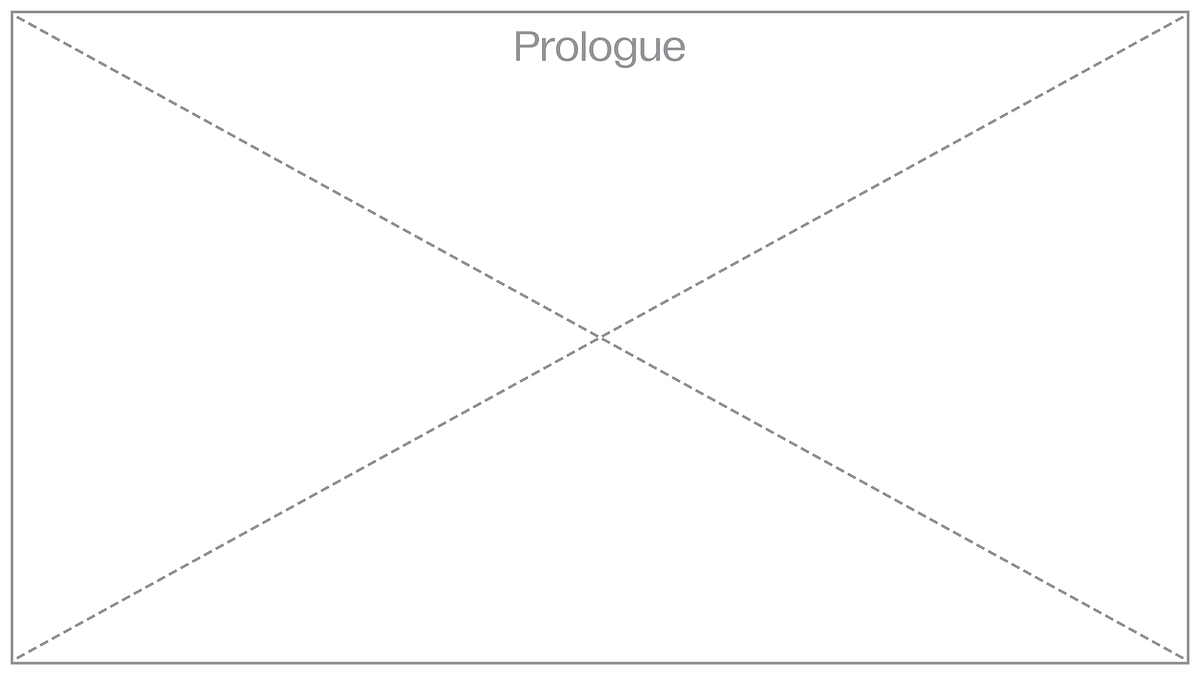A group exhibition of works which lack the very things which, conventionally, ought to allow people to consider them works of art.
It could be said that it was in such a gesture of excision—a consequence of self-imposed limitation or of an aspiration towards extreme functionality—that what we now term modern art had its beginnings. If in the late nineteenth and early twentieth centuries modernism and the avant-garde rejected illusionism and objectivity, depth, colour, decorativeness, and ornamentality, then later, as part of conceptual art and minimalism, artists shed skill and professional training, originality and materiality—in other words, they removed what had previously constituted the foundations of aesthetics from art. A work could no longer be reduced to a finite physical object.
Examples of productive absence and elimination are at the centre of A Brief History of Absence. How does a work function when it loses its name? What happens to art when it leaves the exhibition hall? How does the rejection of the traditional separation of artwork and public open up new horizons of aesthetic experience? Can an artist delegate the creation of an artwork to others, even to non-human agents? What arises in this emptiness? How does the absence of a part transform the whole? Is something added when something is taken away?
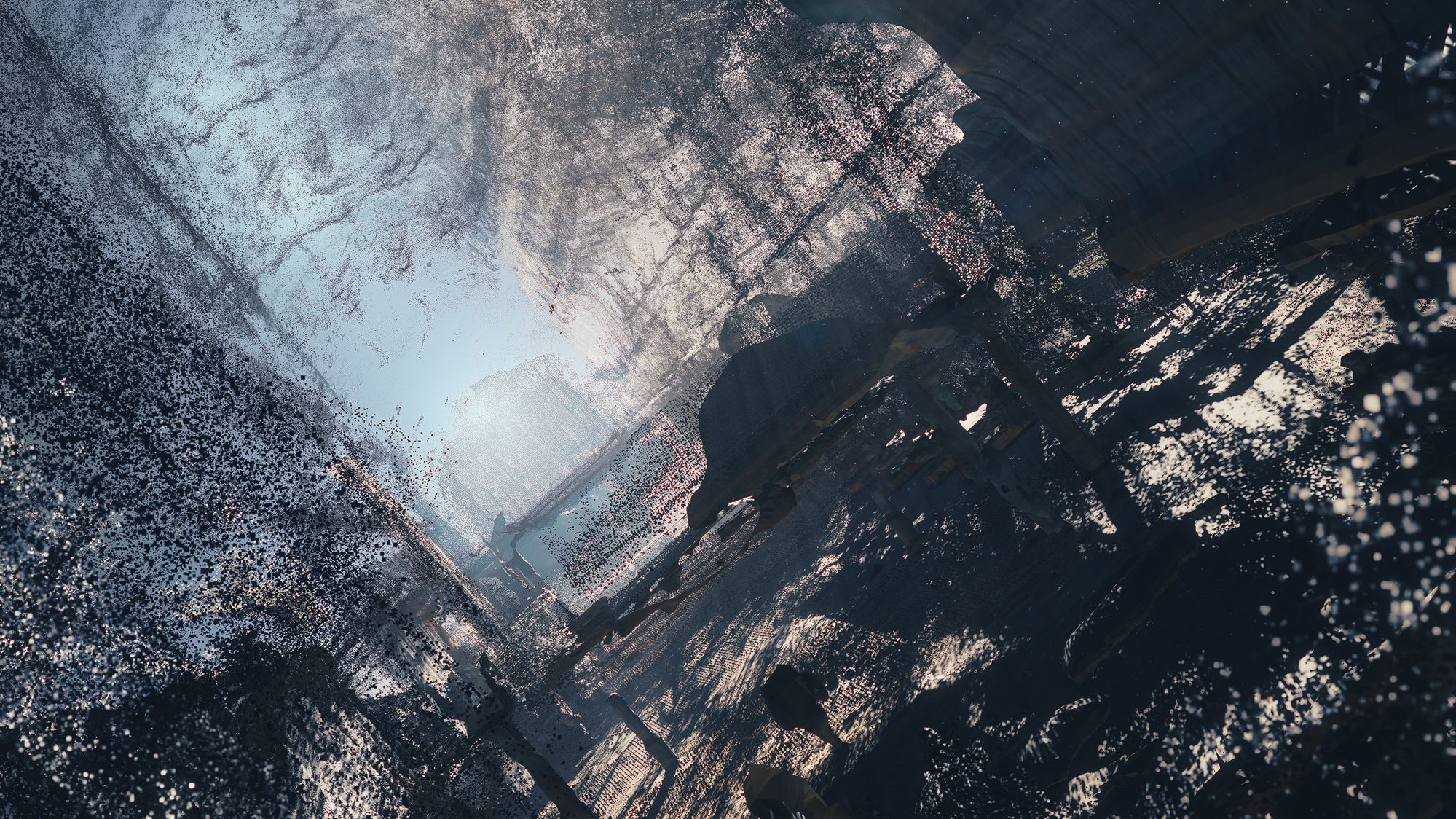
John Cage’s work 4’33”, written in 1952, one of the most radical gestures in the history of modern academic music, serves as the prologue to the exhibition, which consists of several thematic parts.
The “Untitled” section brings together works from different eras and artistic movements, all of which have one thing in common — their creators regard laconic titles as artificial, imposed restrictions, and choose instead to leave interpretation of their works to viewers. The section features pieces by renowned artists, including Pavel Filonov, a classic of the Russian avant-garde movement, John Armleder, one of the most significant abstractionists during the turn of the 20th and 21st centuries, Moscow conceptualists Ivan Chuikov and Viktor Pivovarov, art provocateur Martin Kippenberger, as well as photographs from exceptional Soviet and Russian masters like Alexander Slyusarev, Igor Mukhin, Yuri Rybchinsky, and Alexandra Demenkov.
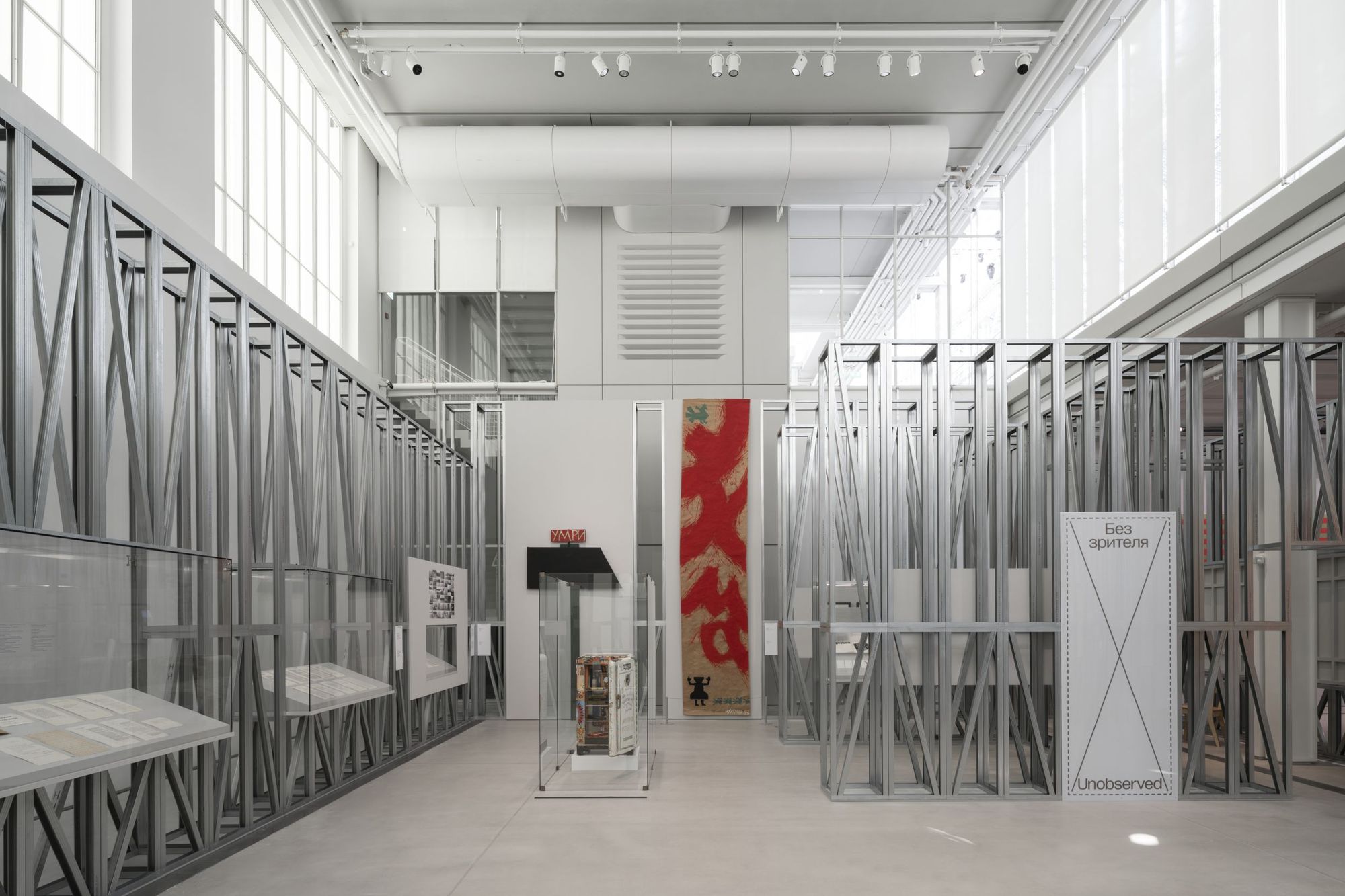
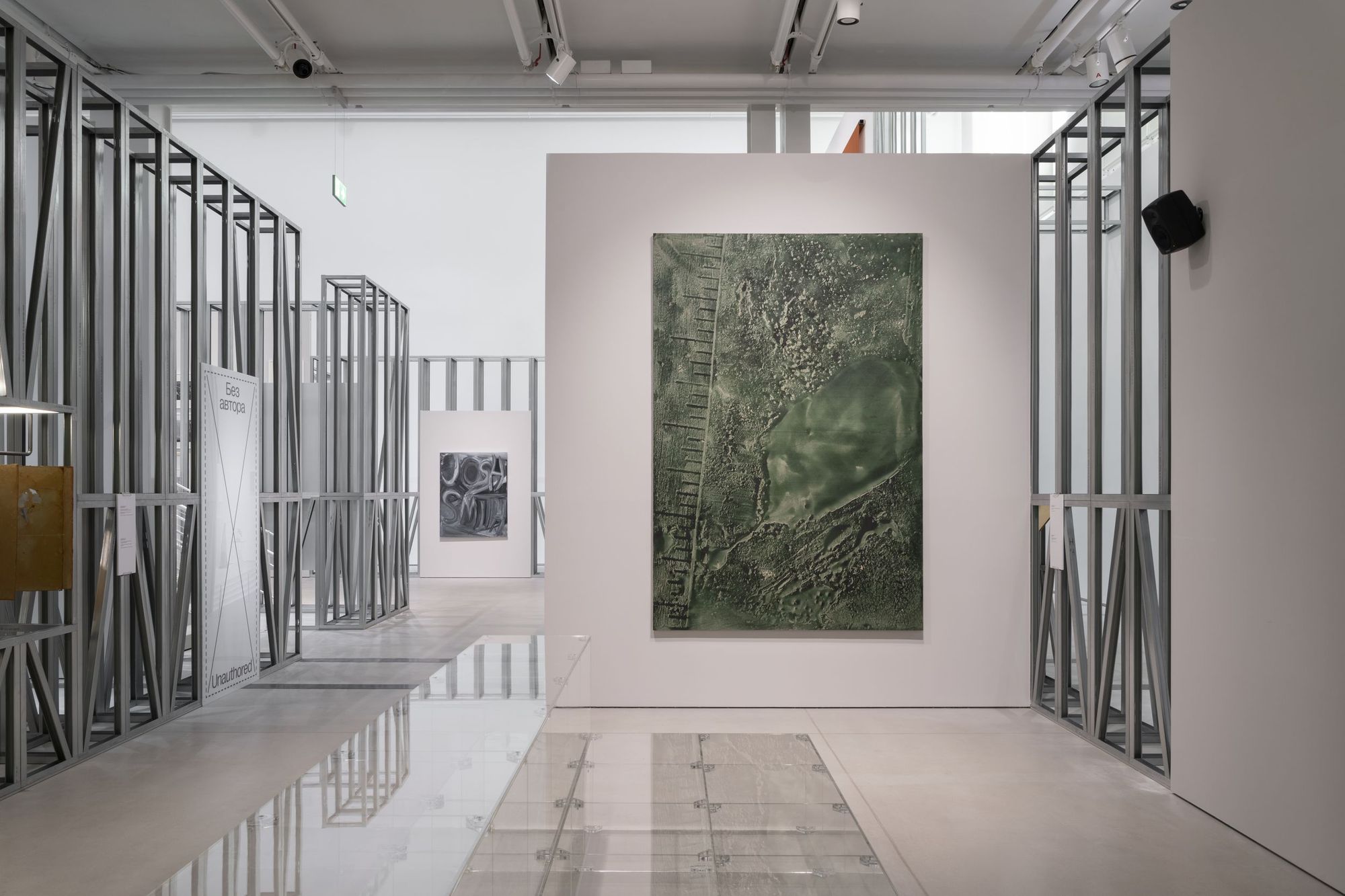
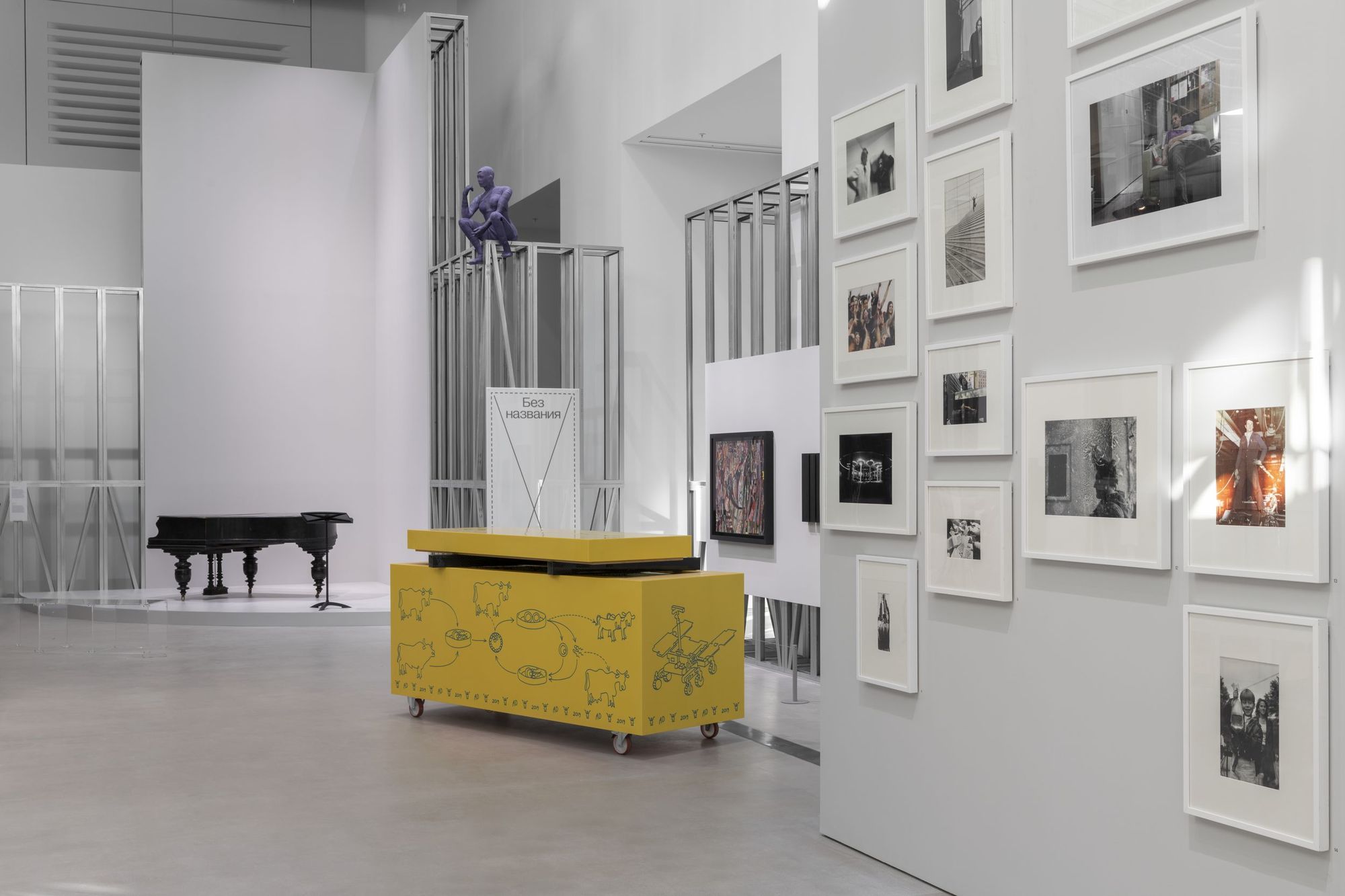
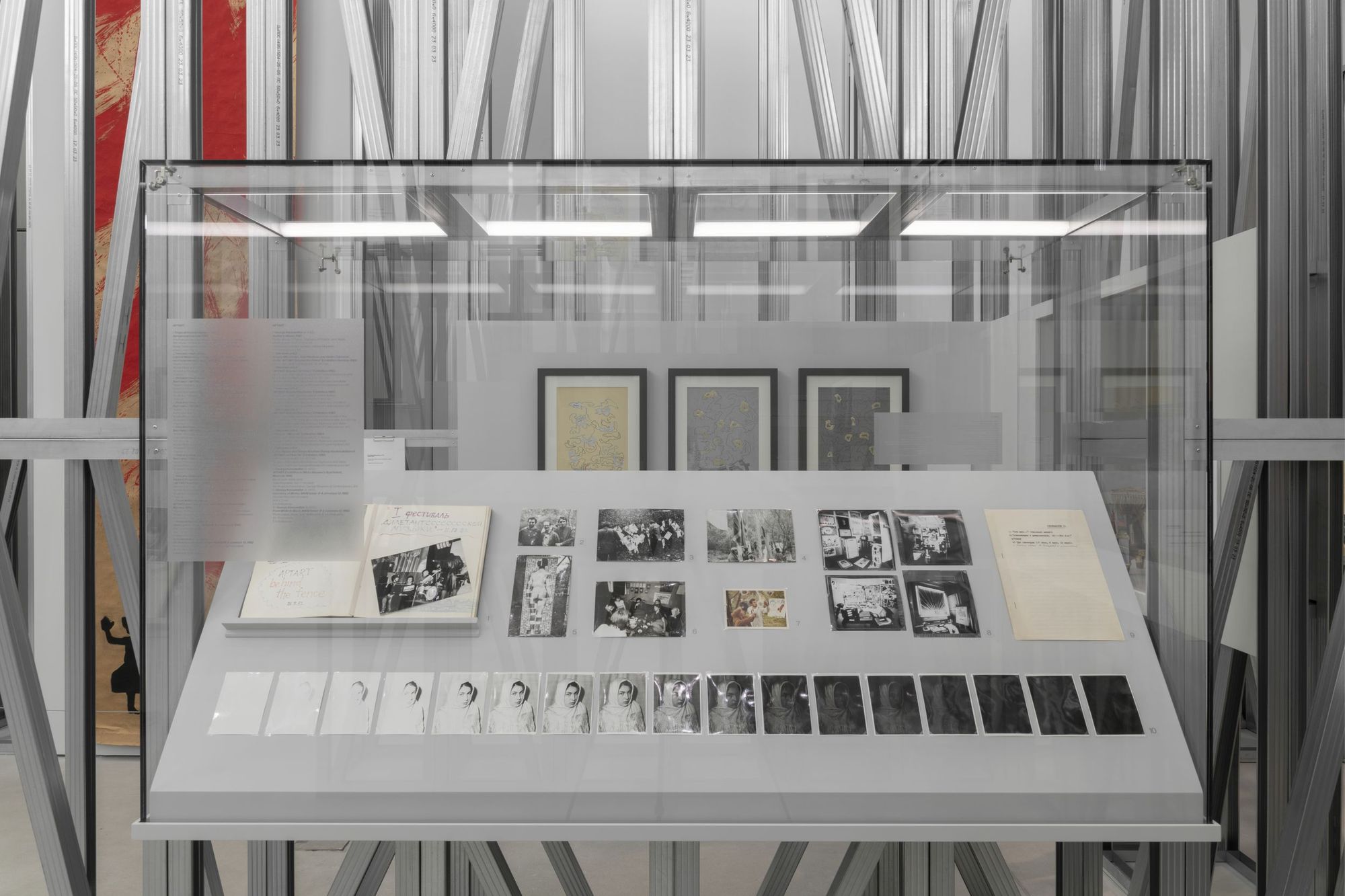
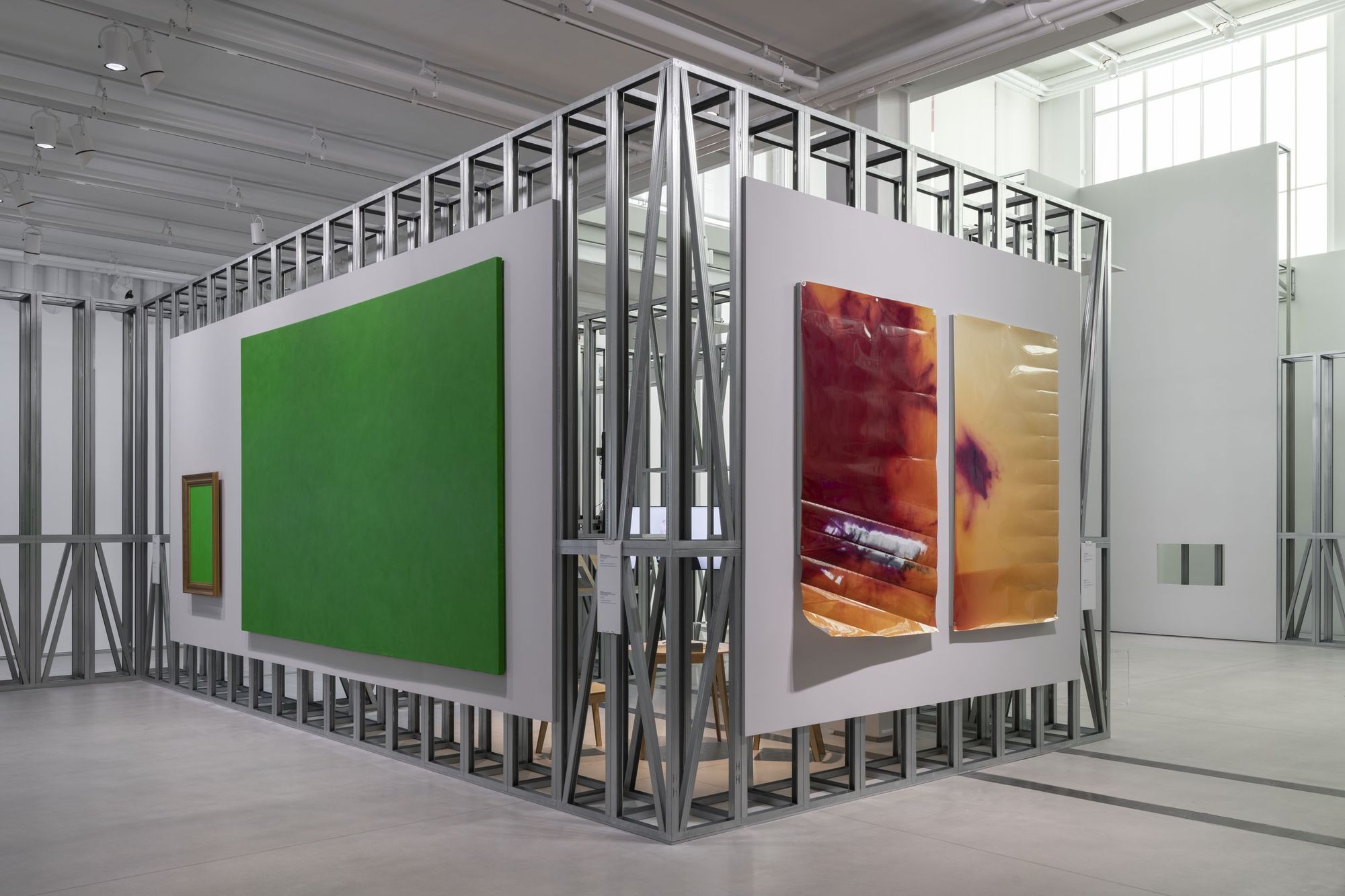
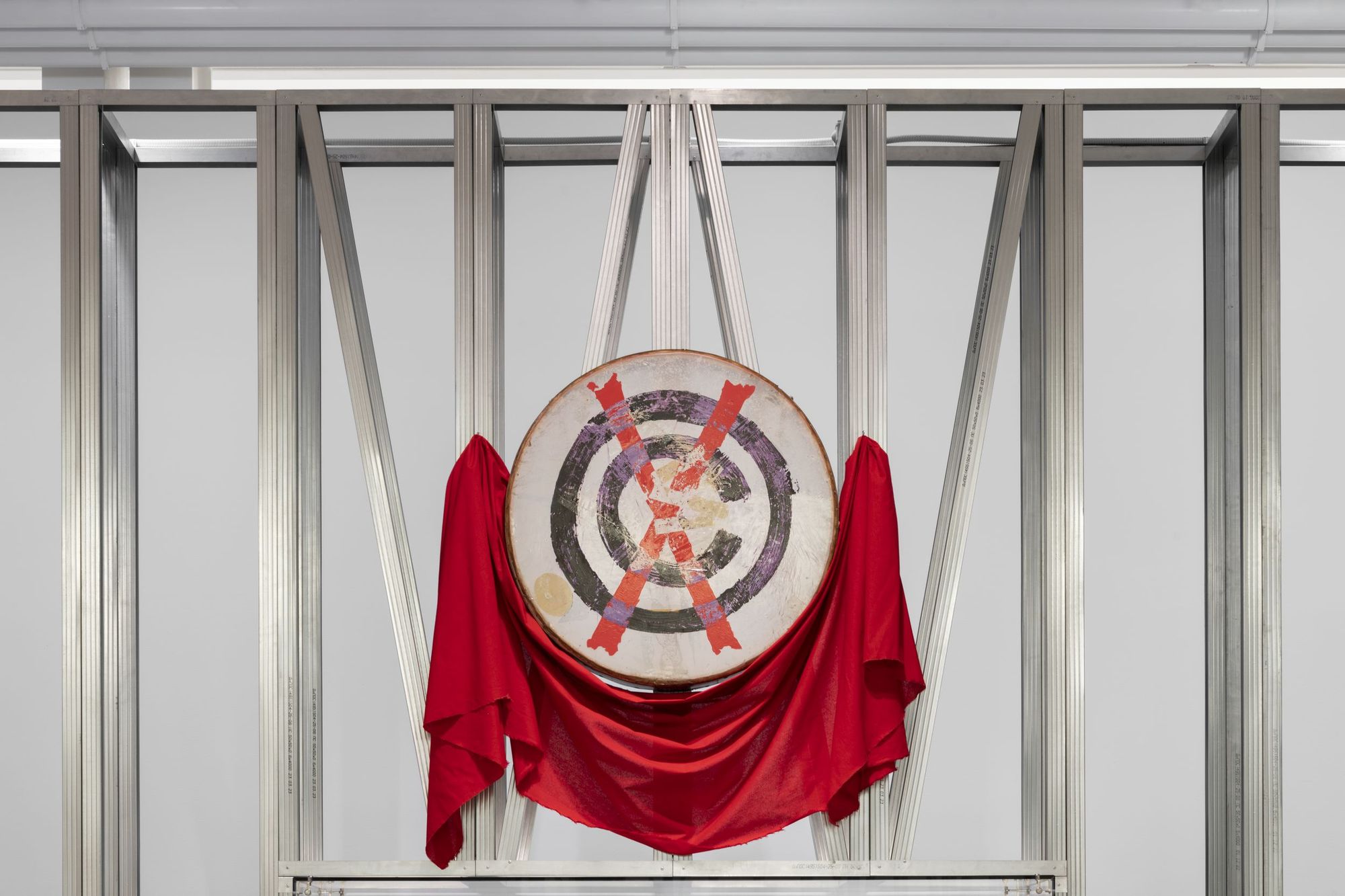
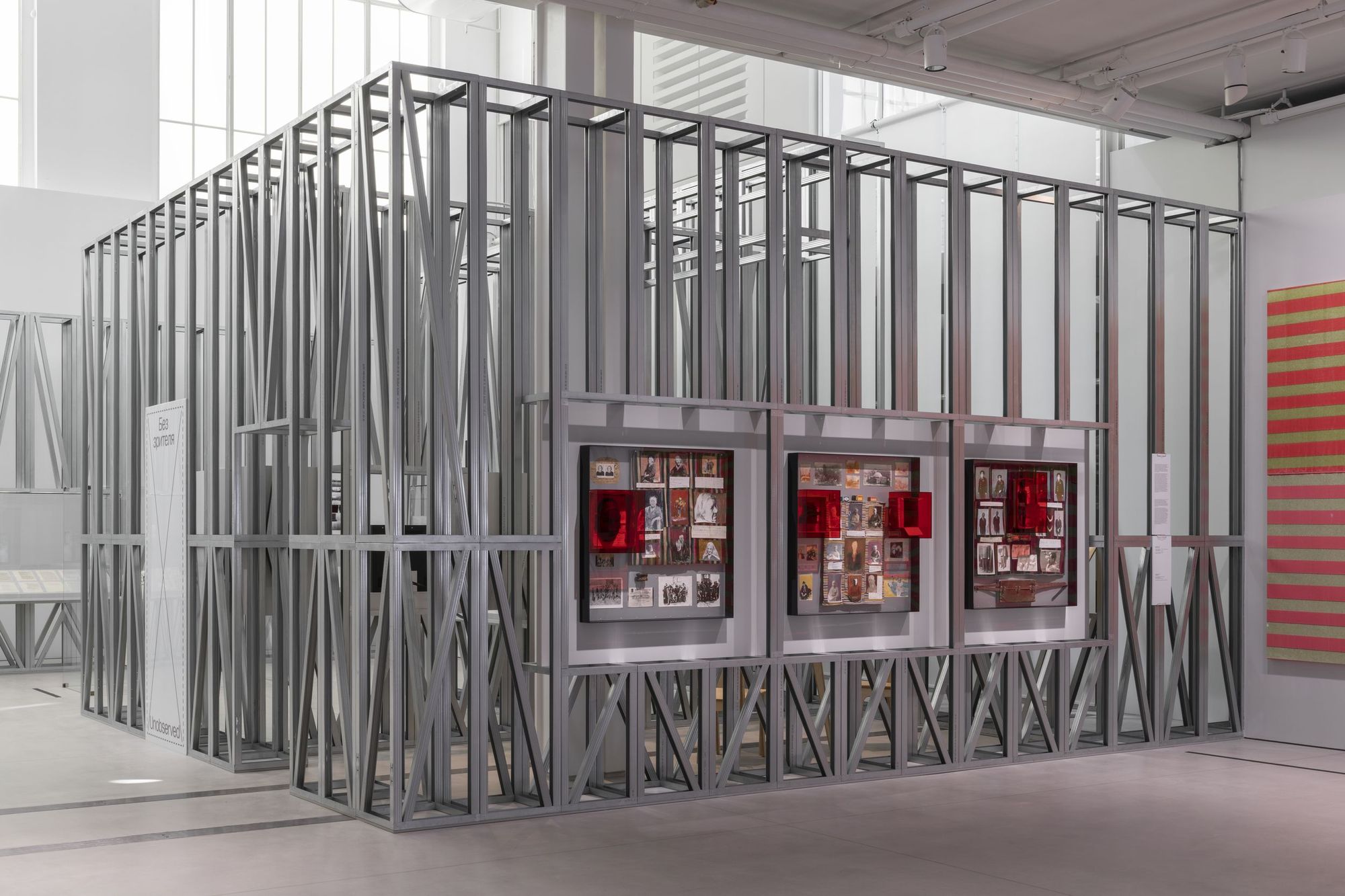
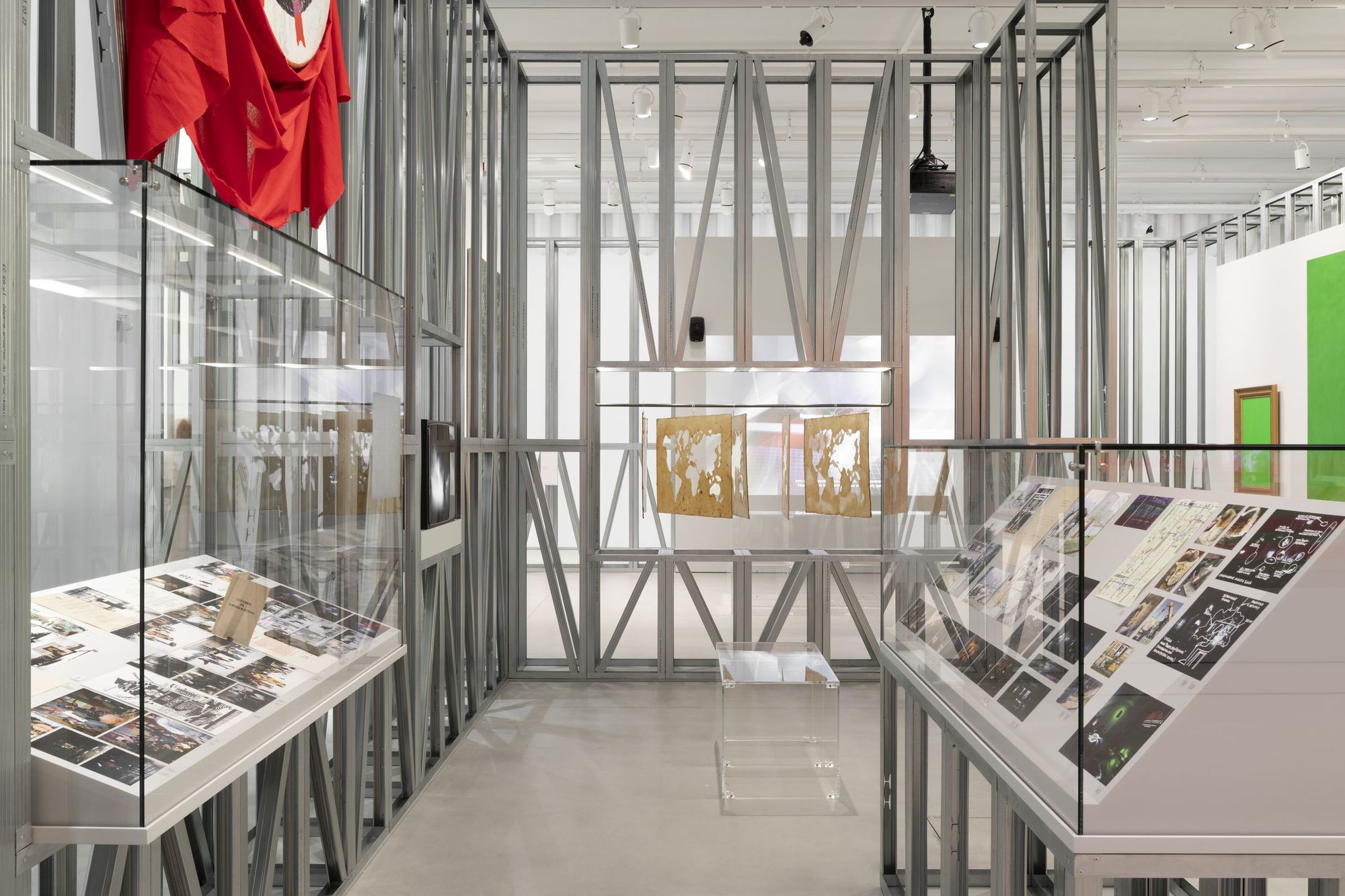
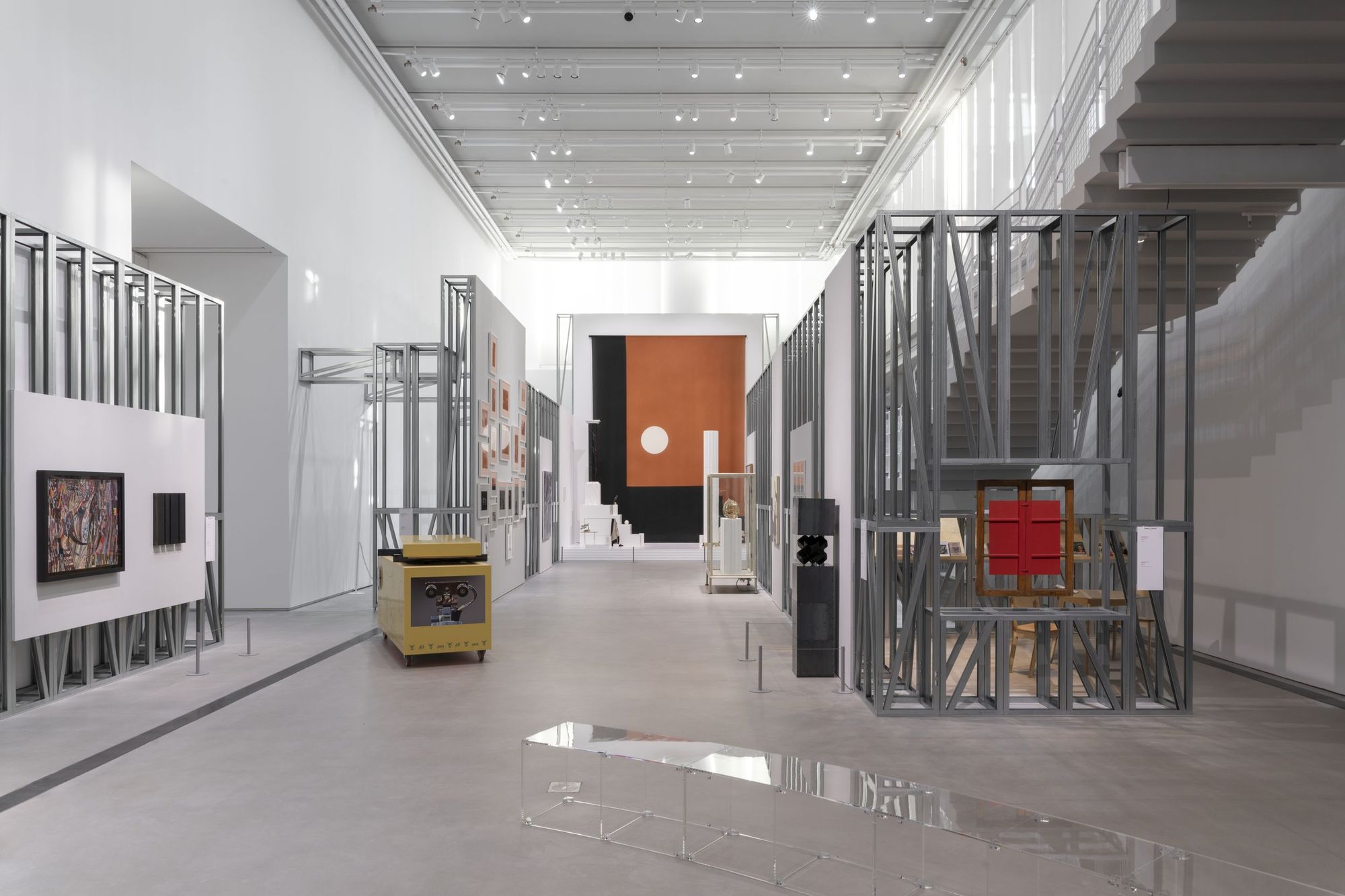

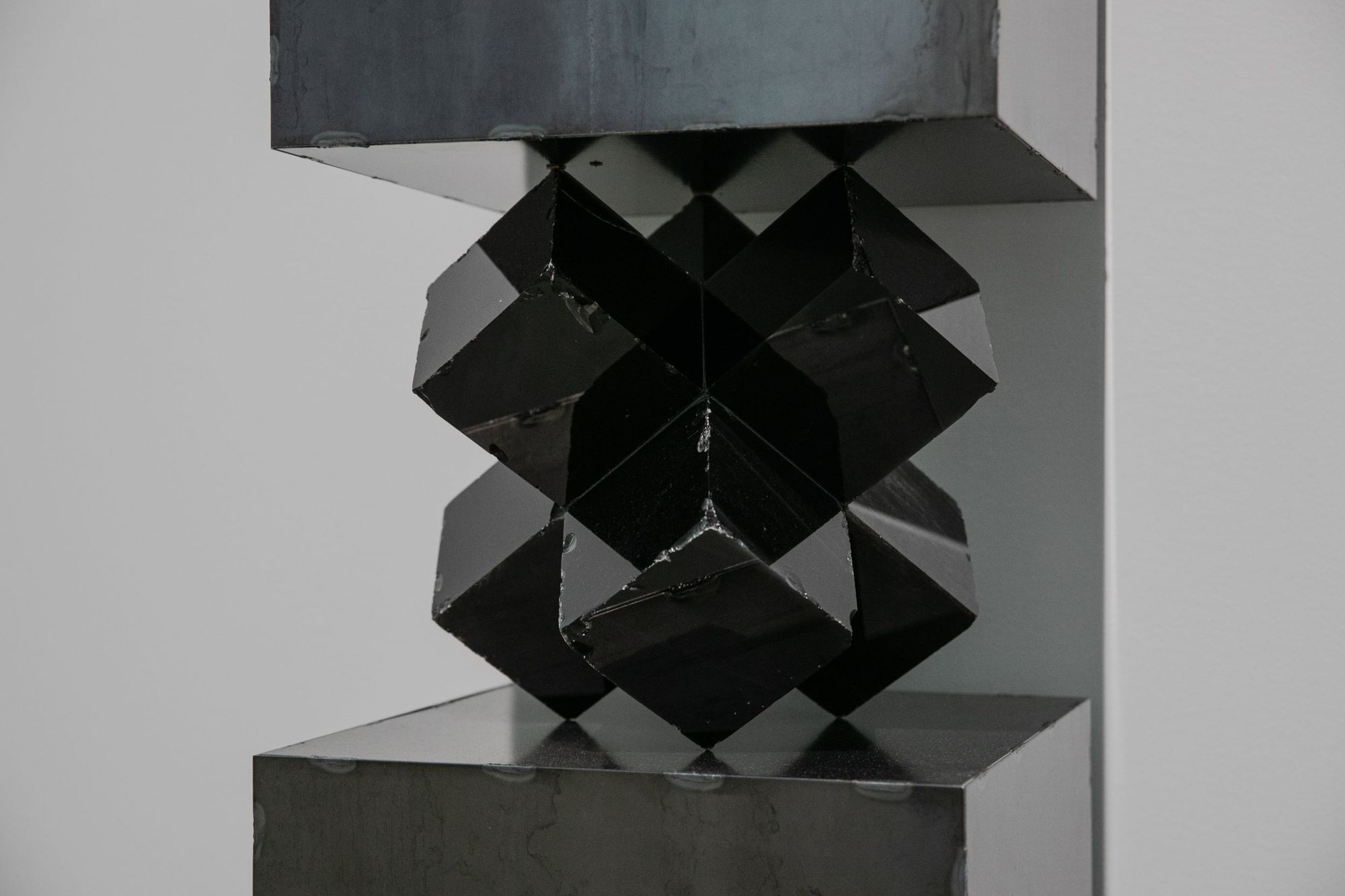
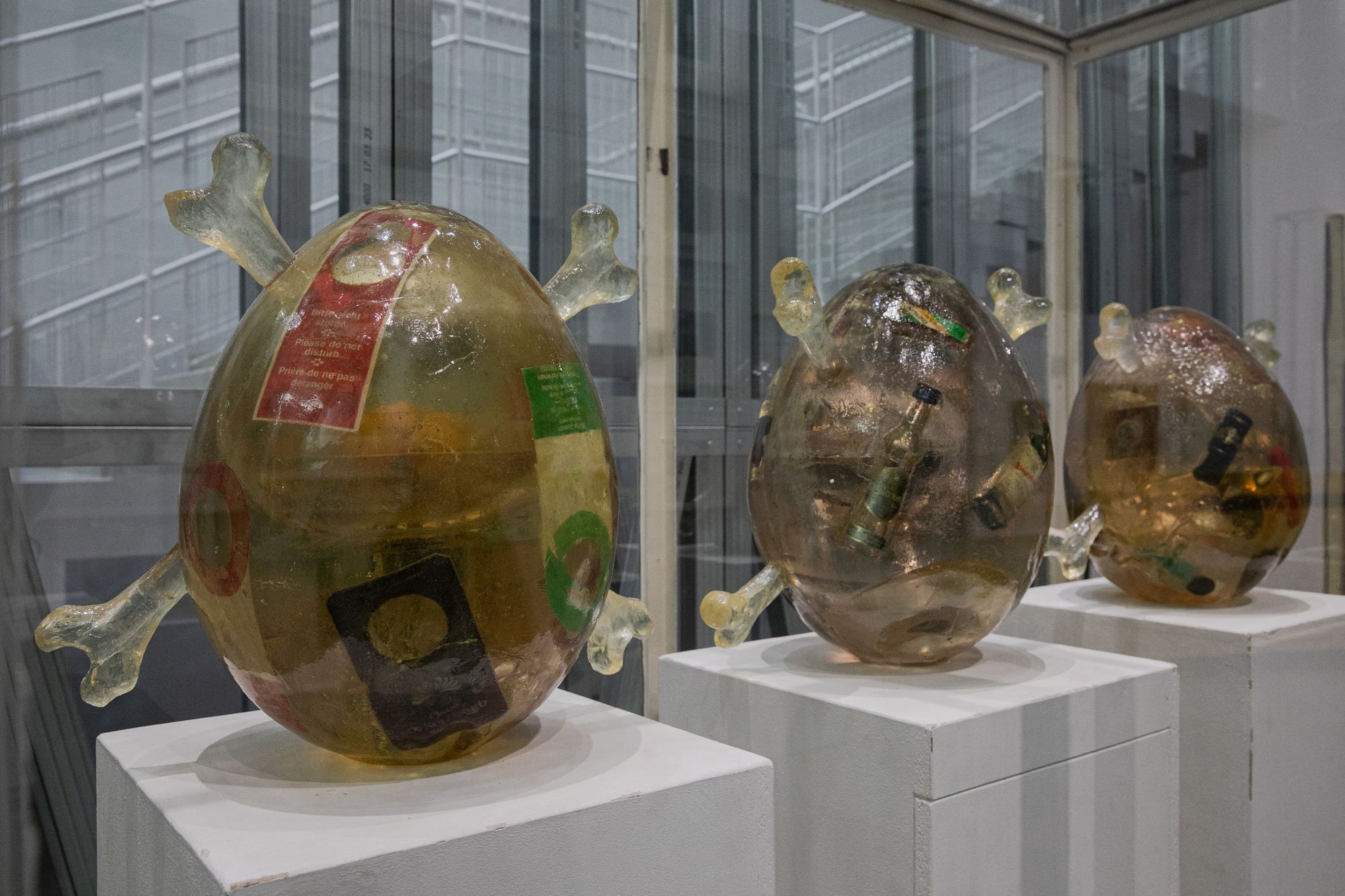
All photos: Daniel Annenkov
The “Unauthored” section traces the constructive role of (self-)elimination and the blurring of the author’s position in art through other examples: anonymity and pseudonyms, mystification and fictive collectivism, delegated performance, the use of printers and other technical methods that break the organic connection between brush and canvas, and so on.
Among the works on view are paintings by Daniel Lefcourt, combining painting, digital photography, sculpture, 3D-modelling and found materials, “printed paintings” by Wade Guyton, an installation by Alexei Buldakov, objects by the fictional Austrian artist Heidi Schneider invented by the Moscow artists Irina Petrakova and Oleg Frolov, and other works. The exhibition for the first time presents the first ever retrospective overview of the work of the For Anonymous and Free Art group, one of the most striking phenomena of the Russian counterculture of the 1990s, who preached rejection of professional art, DIY principles, impersonality, and material disinterest. The curators have collected rare archival materials, leaflets, texts, and films about the collective.
The artists featured in the “Unobserved” section challenge traditional notions of what it means to be a viewer, and how this role might be redefined. For instance, Yelena Kovylina’s performance Save My Soul serves as a risky experiment. Slava Fyodorov’s film The Private Life of Igor Nikolaevich depicts the hero’s gaze becoming the object of the observation in itself. In the performance 10,000 Steps Nikita Alexeev thoroughly documents his solo journey from the Kalistovo station to the Radonezh village in the Moscow region. The Collective Actions art group’s field performances, which have been intended for an anonymous viewer since the late 1970s, are showcased through video recordings and original typewritten chronicles of Trips Out of Town with detailed commentaries. Additionally, the exhibition includes archival materials and preserved works from the APTART project, essentially the first Russian private gallery established by unofficial artists and figures of the Soviet underground in the 1970s and early 1980s.
The exhibition’s epilogue features Zero object by Timur Novikov and Ivan Sotnikov, which originated by chance on October 12, 1982, and became an incendiary manifesto with an unambiguous appeal to review the current situation, and not just in the sphere of cultural production.
Curators
Karen Sarkisov, Andrei Vasilenko
Artists
Nikita Alexeev, John Armleder, Dmitry Baltermants, Andrey Bezukladnikov, Aleksey Buldakov, John Cage, Ivan Chuikov, Collective Actions, Alexandra Demenkova, Aleksandra Domanović, Alexander Egorov, Haris Epaminonda, Andrey Filippov, Pavel Filonov, For Anonymous and Free Art, Günther Förg, Slava Fyodorov, Jan Ginsburg, Andrey Gordasevich, Wade Guyton, Mark Hagen, Sergey Khalzov, Georgy Kiesewalter, Martin Kippenberger, Stas Klevak, Alexander Konstantinov, Elena Kovylina, Vik Laschyonov, Daniel Lefcourt, Evgeny Likhosherst, Julia Mangold, Vladimir Mironenko, Vladimir Mishukov, Igor Mukhin, Mukhomory, NONSNS, Timur Novikov and Ivan Sotnikov, Igor Okhrimenko, Nikolai Panitkov, Mikhail Pavin, Natalia Pavlovskaia, Natalya Perova, Viktor Pivovarov, Marc Riboud, Mikhail Roginsky, Georgy Rozov, Yury Rybchinsky, Heidi Schneider, Alexander Slyusarev, Josh Smith, Olga Tobreluts, Konstantin Zvezdochyotov
Project team
Architecture
Ksenia Golikova, Anastasia Gritskova, Sergey Nebotov (NOVOE Architects)
Lighting
Ksenia Kosaya
Producers
Alexandra Chistova, Stacy Dementyeva
Technical production
Andrey Belov, Artem Kanifatov, Maksim Lapshin, Mikhail Sarkisyants
Art logistics and registration
Daria Krivtsova
Accessibility and inclusion curators
Sasha Anikushin, Vlad Kolesnikov, Oksana Osadchaya
The exhibition is organised in collaboration with
ART4.RU Contemporary Art Museum
E.K.ArtBureau
Garage Museum of Contemporary Art
MANI Museum
Multimedia Art Museum, Moscow
PERMM Museum of Contemporary Art
SNS Group of Companies
ROSIZO State Museum and Exhibition Centre
State Russian Museum
State Tretyakov Gallery
Timur Novikov Estate, Saint Petersburg
Media Partners

